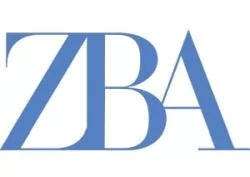Introduction
The Insolvency and Bankruptcy Code, 2016 ("Code") one of the more significant legal reforms in India in recent times, was enacted with the objective of reorganising and resurrecting corporate debtors in a time bound manner. The aim of the Code is to maximise the value of assets of the corporate debtor, whilst balancing the interests of all stakeholders.
The key distinguishing feature of the Indian insolvency process, is the creditor in control model as opposed to the debtor in possession regime. The upshot is that once the insolvency process commences, the corporate debtor's board is suspended and the incumbent management's power of control is overridden by the insolvency professional, who conducts the affairs of the corporate debtor as a 'going concern'. All major decisions are taken by the committee of creditors ("CoC"). Resolution plans/bids are invited from prospective applicants with a view to rescuing the company. Bids are assessed by the CoC on the basis of a stipulated evaluation matrix and the winning resolution plan/bid is submitted to the adjudicating authority, i.e. the National Company Law Tribunal ("NCLT") for final approval. The entire process is to be completed within a stipulated time frame of 270 days. The corporate debtor is liquidated if rehabilitation is not possible within the 270-day time period.
Large parts of insolvency law in India remain untested and the Code like any new enactment is constantly evolving based on judicial interpretation. The recent case of Binani Cement posed difficult questions testing the new bankruptcy regime in India.
The judgement rendered in this case made wide ranging observations on various aspects of the Code, emphasizing the key objectives of the Code, the underlying principles behind the rules and cautioned against abuse of the insolvency process, which may impact the final outcome of the rescue process.
The Supreme Court upheld the National Company Law Appellate Tribunal's ("NCLAT") order allowing UltraTech Cement ("UltraTrech") to acquire Binani, thereby bringing an end to a long drawn legal battle.
Factual Matrix
Dalmia Bharat-led Rajputana Properties ("Rajputana") emerged as the highest bidder for Binani, resulting in the CoC initiating negotiations with Rajputana. Subsequently UltraTech, (which was the second highest bidder) submitted a revised bid in which it proposed paying all secured and unsecured financial and operational creditors the entire principal amount and interest on their claims. UltraTech's revised bid was clearly a better offer which if accepted would ensure that Binani would be fully rehabilitated.
The CoC refused to consider the improved bid submitted by UltraTech and instead approved Rajputana's plan, on the basis that the revised bid was submitted after the due date. The Coc also felt that allowing Ultratech to submit a higher bid after disclosure of Rajputana's offer would be unfair to Rajputana. UltraTech being aggrieved by the decision of the CoC moved the National Company Law Tribunal (NCLT) at Kolkata where it sought approval of its plan.
The NCLT after considering arguments found the resolution plan submitted by Rajputana to be discriminatory and directed the CoC to consider UltraTech's revised offer. Rajputna then appealed the NCLT judgement before the National Company Law Appellate Tribunal (NCLAT) which upheld the judgment passed by the NCLT, directing the CoC to approve the plan submitted by UltraTech. This judgement was challenged by Rajputana in the Supreme Court, which declined to interfere and directed the NCLAT to decide the matter.
In an interesting twist, the promoters of Binani in parallel proceedings before the NCLT, sought termination of the insolvency proceeding on the ground that they were ready and willing to repay the entire outstanding amount due to the creditors of Binani. The promoter's proposal to terminate insolvency proceedings against Binani was rejected, entailing an appeal to the NCLAT and thereafter the Supreme Court, – both of which refused to permit termination of insolvency proceedings.
NCLAT Ruling
The NCLAT, while approving UltraTech's plan, discussed at length the primary aim and object of the Code. It emphasised that any resolution process must ensure: i) maximisation of value of assets of the corporate debtor ii) promote entrepreneurship iii) availability of credit, and iv) the interest of all stakeholders is balanced. The NCLAT's reasoning to allow the UltraTech bid was justified on the ground that the process could always be modified by the CoC to accommodate a better proposal.
The NCLAT also ruled that the resolution process has to be equitable to all classes of creditors, including operational creditors and the plan submitted by Rajputana apart from being lower in price, failed to fully consider the claims of operational creditors.
Equally significantly, the NCLAT rejected the proposal made by the promoters of Binani who after the commencement of insolvency process sought to repay the entire outstanding amounts due from Binani, on the ground that this would subvert the insolvency process.
The NCLAT judgement was confirmed by the Supreme Court, which approved the revised bid submitted by UltraTech to acquire Binani.
Conclusion
The judgment given by the NCLAT and approved by the Supreme has important implications for the evolution of insolvency law in India which is at a nascent stage
The upshot of the ruling is that the primary objective of the Code is to revive the corporate debtor but within a 'time-bound' manner. The NCLAT cautioned that procedure cannot be rigidly and inflexibly applied in all circumstances- delayed bids may in exceptional circumstances be considered, provided they offer a better revival package and has been submitted by an applicant who was participating in the process from inception. Liquidation should be avoided and is only an option of last resort. Resolution plans submitted by fresh applicants at a later stage should not be considered, even if they provide for a better revival solution.
The judgement also highlights the significant role played by the CoC in the resolution process and cautioned the CoC to act responsibly and in the interest of all creditors and not just themselves.
Whilst value maximisation is a laudable objective in insolvency, suitable care and precaution must be taken to ensure that secrecy regarding the bid value is maintained, or else the subsequent bidder would have an unfair advantage.
The above is a generic analysis and should not be regarded as a substitute for specific advice based on the facts of a client's objectives and specific commercial agreements reached. Please do reach out to us at mail@zba.co.in for any queries.

